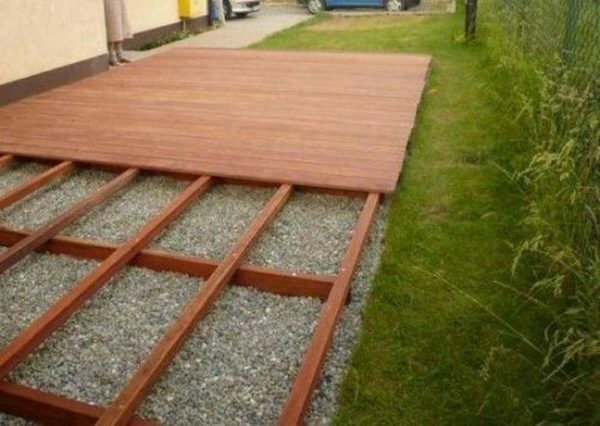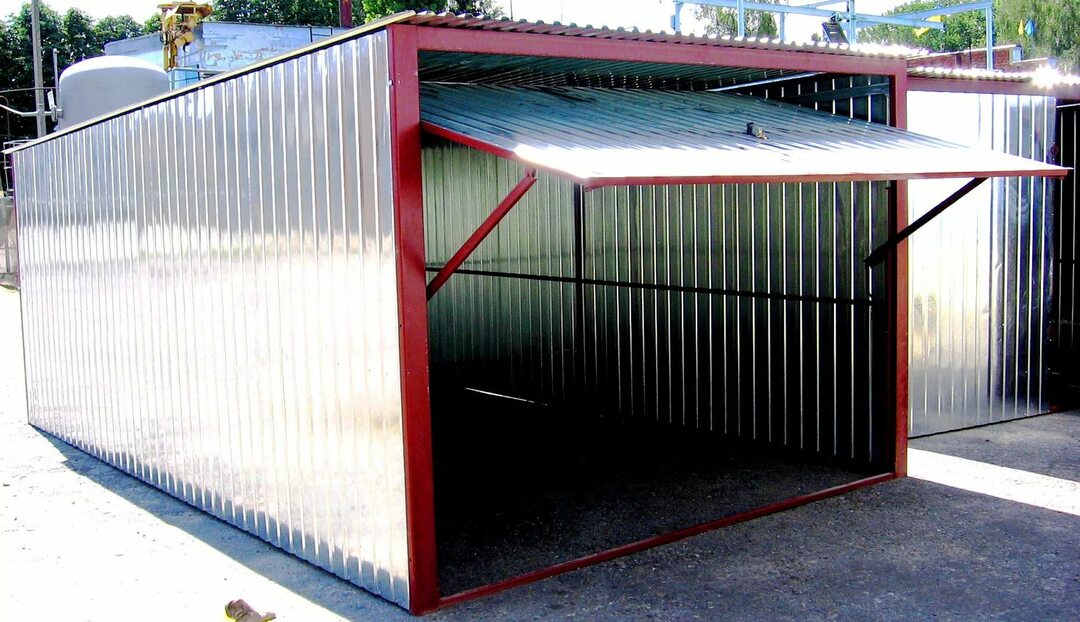Pergolas Polycarbonate: advantages, variety and familiarity with 6 samples
Table of contents
-
1 why polycarbonate
- 1.1 small text
-
2 Classification
- 2.1 Open and closed
- 2.2 Portable and stationary
- 2.3 Functional and decorative
-
3 installation subtlety
- 3.1 cutting
- 3.2 Requirements to the frame
- 3.3 mount
-
4 Examination of the samples
- 4.1 Scheme 1: Dome arbor
- 4.2 Scheme 2: a closed terrace
- 4.3 Scheme 3: open arbor with a dome roof
- 4.4 Figure 4: transparent walls and roof with shingles
- 4.5 Scheme 5: cylindrical arbor
- 4.6 Figure 6: arbor, parasol
- 5 conclusion
Greetings, comrades! Our today's topic - gazebo made of polycarbonate. I'll tell you what they are attractive and what their vulnerabilities as they are classified and on what grounds. And, of course, our meeting will be accompanied by photographs of finished buildings.
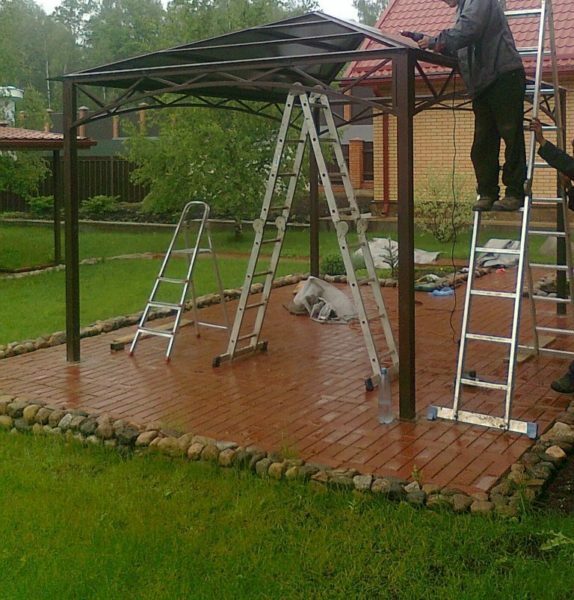
Construction of stationary arbor. Roof material - polycarbonate.
why polycarbonate
This material combines:
- Translucent. Depending on the color of polycarbonate passes from 30 to 88% of light in the visible spectrum;
- High mechanical strength, Including in relation to the impact. Monolithic polycarbonate is 250 times stronger than its direct competitor - silicate glass;
By the way, it has the highest strength among all industrial producing method of translucent materials.
- Plastic. This means that the polycarbonate pergola can be arbitrarily complex shape: the flexibility of skin allows to implement any design ideas;
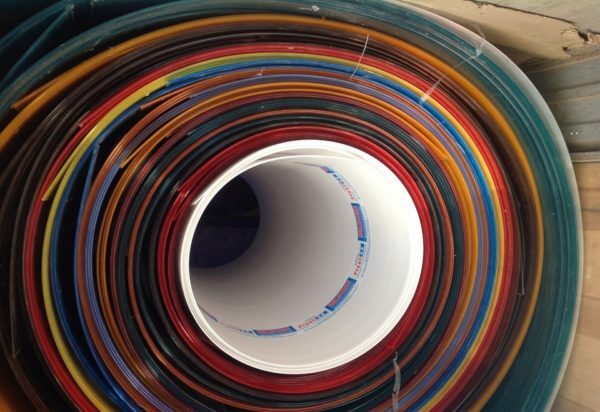
Material allows bending with a relatively small radius.
Even the destruction of the sheet does not give sharp pieces that could injure you or your family members.
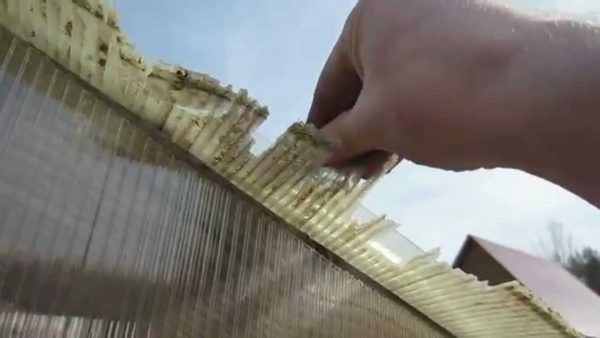
Even completely it destroyed the sheet does not threaten injury fragments.
- Low weight. At a density of 1.2 g / cm3 material lighter than glass twice the same volume;
- ease of handling: And monolithic and cellular polycarbonate are easy to cut ordinary hacksaw and other hand tools;
- Resistance to aggressive environments. On the practical side, this means that it is possible to use a weak (less than 5%) acidic and alkaline solutions for cleaning the surfaces of translucent;
- In polycarbonate is added to the list of advantages low thermal conductivity, wherein, the greater the thickness of the sheet, the less heat loss therethrough. This is important in the construction of operating year-round indoor pavilions;
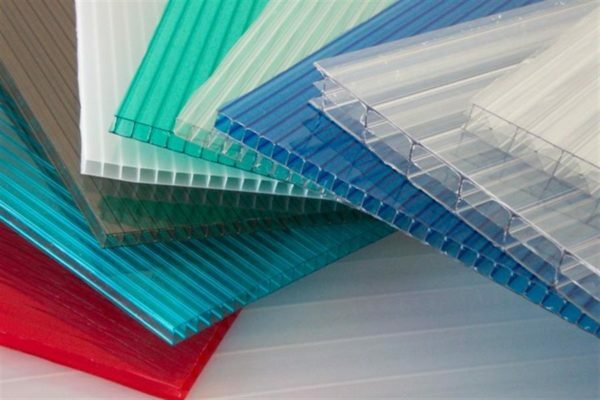
The larger the cells, the less heat passes from the outer leaf to the inner surface.
- Finally, the buyer will be pleased low price square meter (with a thickness of 6 mm honeycomb material - from 450 rubles / m2). For comparison - the square silicate smooth glass thickness of 4 mm is not less than 900 rubles. Prices are relevant for the spring of 2017
small text
In polycarbonate two serious drawbacks in the background of competing solutions:
- Low resistance to ultraviolet. The light material gradually becomes fragile and gets damaged during the first heavy rain or hail;
- Relatively short period of service. Gazebo will serve you no more than 15 years, even if the manufacturer is not saved on the UV filter. Inexpensive Chinese polycarbonate often begins to collapse in 3-4 years after the construction of a gazebo.
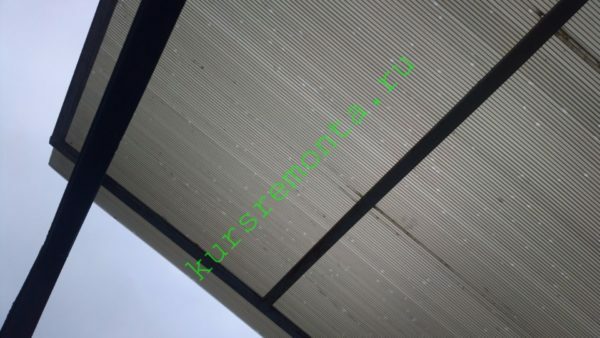
In the photo - the destruction of polycarbonate after serving 4 years. Location - Sevastopol, with its extremely large number of sunny days.
Real term polycarbonate service is linearly related to the amount of the absorbed ultraviolet light. Therefore, in the shade of the trees lining the gazebo will last several times longer than in open areas.
Classification
So what can be done gazebo made of polycarbonate?
Here are the signs by which one can classify these structures.
Open and closed
| Picture | Description |
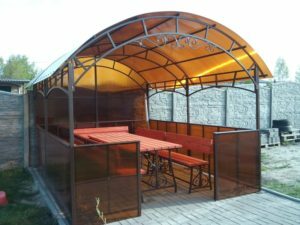 |
outdoor gazebo ideal for garden you visit only during the warmer months: it will protect you from the sun and rain. |
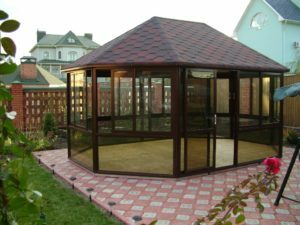 |
The closed design of the gazebo you can use it in the off-season and even in winter: it is not afraid of the wind and snow. Due to the greenhouse effect inside temperature will always be a dozen or two degrees above the street. |
Portable and stationary
| Picture | Description |
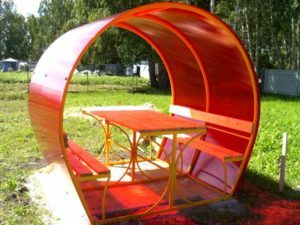 |
portable: Easy and not attached to the base frame allows you to set the gazebo at any point in your garden and move it to the sun, if necessary, in the shadow and back. In winter, it is easy to clean the shed or barn. The downside of mobility - small size. |
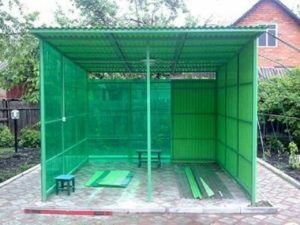 |
stationary arbor It involves the construction of a foundation (generally columnar light) or at least concreting pillars. Its advantage - that the rest area of the zone can be made arbitrarily large. |
Functional and decorative
| Picture | Description |
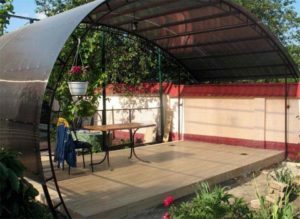 |
functional gazebo polycarbonate built with his own hands in the event that you are not willing to spend their money on decor and time. It is characterized by the use of most available materials and simple design solutions. |
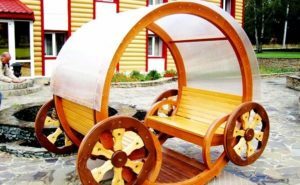 |
decorative structure put at the heart of the aesthetics. The decor may act as an unusual form of forged construction elements carved wooden decoration etc. |
installation subtlety
As you can see, gazebos made of polycarbonate may have a variety of shapes and designs. Trying to describe in a short article, how to make an arbor of each type, obviously pointless; I shall focus on just how to cut a polycarbonate and sheathe their wooden or metal frame.
cutting
Cellular material is easy to cut along the hundreds of ordinary office knife. However, the curved honeycomb and perpendicular cuts them to perform much more difficult. It is better to use one of two power tools:
- jigsaws from sawing metal. It is for the metal - because rougher sawing wood give burrs;

Jigsaws can cut a sheet perpendicular to the honeycomb.
- Bulgarian with a cutting range of metal or stone. He gives perfect edges without burrs and cracks in any direction of cutting.
Requirements to the frame
The angle of inclination of the roof arbors: Should not be less than 15 degrees to the horizontal. More - better, so we will reduce snow load.
skeleton coloring: It is desirable to choose light colors. They will reduce the heating of wood or metal in the sun and prolong lining life.
For the same reason it is best that the elements of the metal arbor and polycarbonate were separated by rubber gaskets. They have created gaps exclude overheating skin.
mount
fasteners: Self-tapping screws for metal and wood with thermowasher or wide rubber pressshayboy. A large area sheet washers preclude stall wind.
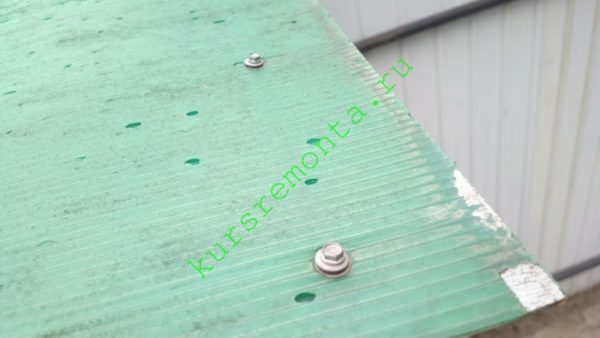
Fastening screws for metal performed with rubber pressshayboy.
Hole Wizard: Drills for wood or metal, with a diameter of 1-2 mm larger diameter fasteners. Amply sized holes eliminates the thermal expansion of the polycarbonate.
Position: Polycarbonate plates are attached side with UV protection up. This aspect is easily recognizable by the marked protective film. The film is removed immediately after the attachment of the sheet: over time, it will stick firmly to the surface and will appear untidy.
edges: The upper edge of the open cells close mechanical profile or an aluminum tape. It is permissible sealing silicone. Profile fastened short side up (this side is protected from ultraviolet radiation).
connections: Executed H-shaped profile with a mandatory sealed top edge of the backsheet.

Lack of H-shaped profile and the unprotected edge rainwater allowed to freely flow into the cell and leave behind dirty streaks.
The bottom sheet should not edge sealed: therethrough will flow cells formed in the condensate.
Examination of the samples
Now let's explore some beautiful and exotic pavilions and get acquainted with the peculiarities of each decision.
Scheme 1: Dome arbor

Domed gazebo with sliding dome sector instead of the door. Shape provides maximum resistance to wind and snow loads.
Scheme 2: a closed terrace
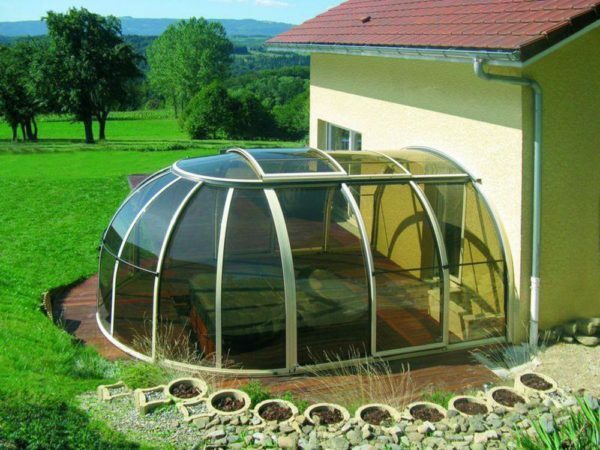
As floor gazebo used Attached to the terrace house. Avoid overheating in the sun thanks to the greenhouse effect allows sliding roofs sector.
Scheme 3: open arbor with a dome roof

The large span dome roofs (used for its construction six meter polycarbonate sheet) frame forced enhance farms. When making artistic forging is used.
Figure 4: transparent walls and roof with shingles
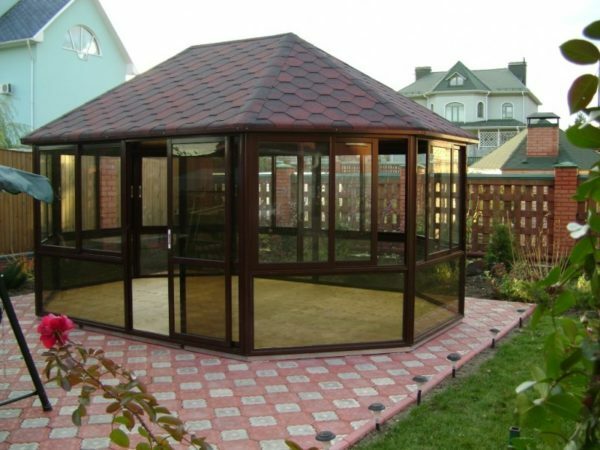
A perfect example of a successful combination of different materials: roof shingles on OSB, wooden frame, combined with panoramic windows made of polycarbonate.
Scheme 5: cylindrical arbor

Cylindrical shell of this building is built of laminated veneer lumber with arts and antiseptic impregnation. Panoramic windows and transparent roof made of reinforced transparent polycarbonate.
Figure 6: arbor, parasol

Cupola frame based on 8 dug in the ground and concreted pillars of square steel tube. The roof has a dome shape, which makes it particularly resistant to strong winds and heavy snowfalls.
conclusion
I sincerely hope that this material will help dear reader to create an individual and unique design of polycarbonate pergola. Learn more about the details of the construction of these pavilions will help the video in this article. Waiting for your additions to it. Good luck, comrades!

